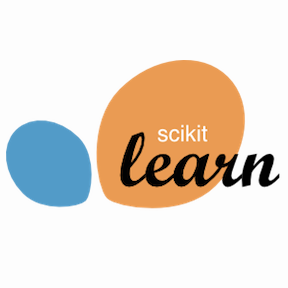Eshan Agarwal's Projects
Support open source and earn a limited edition T-shirt!
🤖 Python examples of popular machine learning algorithms with interactive Jupyter demos and math being explained
Human Activity Recognition ---ML models & Divide and Conquer approach
Repository used to main group ACLs used by Kubeflow developers
adadas
At the end of 2017 the Civil Comments platform shut down and chose make their ~2m public comments from their platform available in a lasting open archive so that researchers could understand and improve civility in online conversations for years to come. Jigsaw sponsored this effort and extended annotation of this data by human raters for various toxic conversational attributes. In the data supplied for this competition, the text of the individual comment is found in the comment_text column. Each comment in Train has a toxicity label (target), and models should predict the target toxicity for the Test data. This attribute (and all others) are fractional values which represent the fraction of human raters who believed the attribute applied to the given comment. For evaluation, test set examples with target >= 0.5 will be considered to be in the positive class (toxic). The data also has several additional toxicity subtype attributes. Models do not need to predict these attributes for the competition, they are included as an additional avenue for research. Subtype attributes are: severe_toxicity obscene threat insult identity_attack sexual_explicit Additionally, a subset of comments have been labelled with a variety of identity attributes, representing the identities that are mentioned in the comment. The columns corresponding to identity attributes are listed below. Only identities with more than 500 examples in the test set (combined public and private) will be included in the evaluation calculation. These identities are shown in bold. male female transgender other_gender heterosexual homosexual_gay_or_lesbian bisexual other_sexual_orientation christian jewish muslim hindu buddhist atheist other_religion black white asian latino other_race_or_ethnicity physical_disability intellectual_or_learning_disability psychiatric_or_mental_illness other_disability Note that the data contains different comments that can have the exact same text. Different comments that have the same text may have been labeled with different targets or subgroups.
Here is our quick CRA application that demonstrates how lifecycles work in class components
This repo contain online practice problem challenge on Analytics vidhya Data Hack platform
This repo contains all of the codes for practice session taken by me in KUJ09 batch of LPU
This Repo contains all projects of the sessions
Magenta: Music and Art Generation with Machine Intelligence
Mask R-CNN for object detection and instance segmentation on Keras and TensorFlow
# run_obj contain live object detection using mask RCNN
MNIST is a simple computer vision dataset. It consists of 28x28 pixel images of handwritten digits.Every MNIST data point, every image, can be thought of as an array of numbers describing how dark each pixel is. Since each image has 28 by 28 pixels, we get a 28x28 array. We can flatten each array into a 28∗28=784 dimensional vector. Each component of the vector is a value between zero and one describing the intensity of the pixel. Thus, we generally think of MNIST as being a collection of 784-dimensional vectors. Not all vectors in this 784-dimensional space are MNIST digits. Typical points in this space are very different! To get a sense of what a typical point looks like, we can randomly pick a few points and examine them. In a random point – a random 28x28 image – each pixel is randomly black, white or some shade of gray. The result is that random points look like noise.Images like MNIST digits are very rare. While the MNIST data points are embedded in 784-dimensional space, they live in a very small subspace. With some slightly harder arguments, we can see that they occupy a lower dimensional subspace. People have lots of theories about what sort of lower dimensional structure MNIST, and similar data, have. One popular theory among machine learning researchers is the manifold hypothesis: MNIST is a low dimensional manifold, sweeping and curving through its high-dimensional embedding space. Another hypothesis, more associated with topological data analysis, is that data like MNIST consists of blobs with tentacle-like protrusions sticking out into the surrounding space. But no one really knows, so lets explore!
Models and examples built with TensorFlow
This Repo contain all the respective files for My-Portfolio
This Repository contain analysis of Pancreatic cancer data in stored gct format using PCA plots and GSVA Algorithm
Tests and exercises
Source: https://www.kaggle.com/c/msk-redefining-cancer-treatment/data
This repository conatin a simple example of python for helping the beginner to learn python
Quora is a place to gain and share knowledge—about anything. It’s a platform to ask questions and connect with people who contribute unique insights and quality answers. This empowers people to learn from each other and to better understand the world. Over 100 million people visit Quora every month, so it's no surprise that many people ask similarly worded questions. Multiple questions with the same intent can cause seekers to spend more time finding the best answer to their question, and make writers feel they need to answer multiple versions of the same question. Quora values canonical questions because they provide a better experience to active seekers and writers, and offer more value to both of these groups in the long term. > Credits: Kaggle __ Problem Statement __ Identify which questions asked on Quora are duplicates of questions that have already been asked. This could be useful to instantly provide answers to questions that have already been answered. We are tasked with predicting whether a pair of questions are duplicates or not.
Meet with these RoboFriends in this React Web App



















